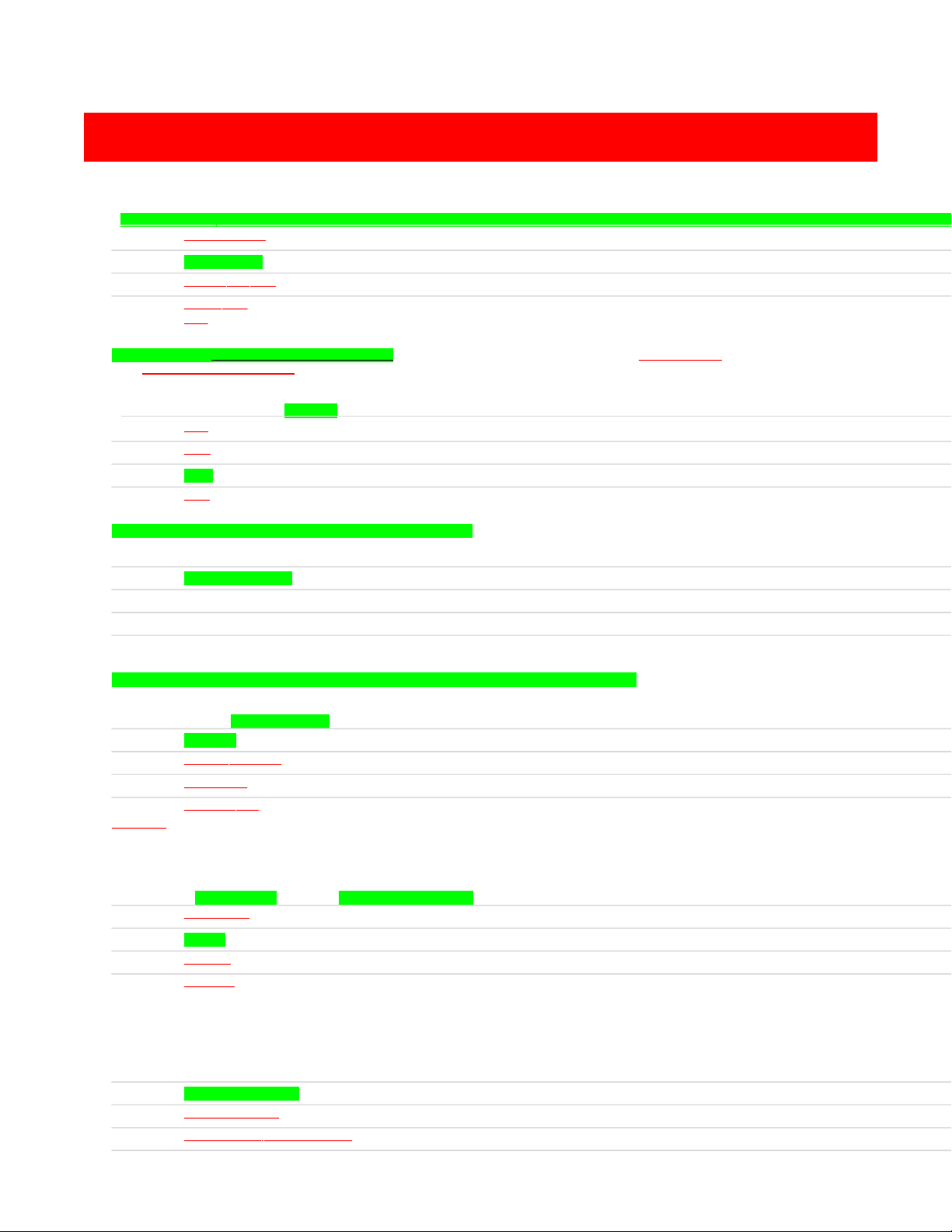
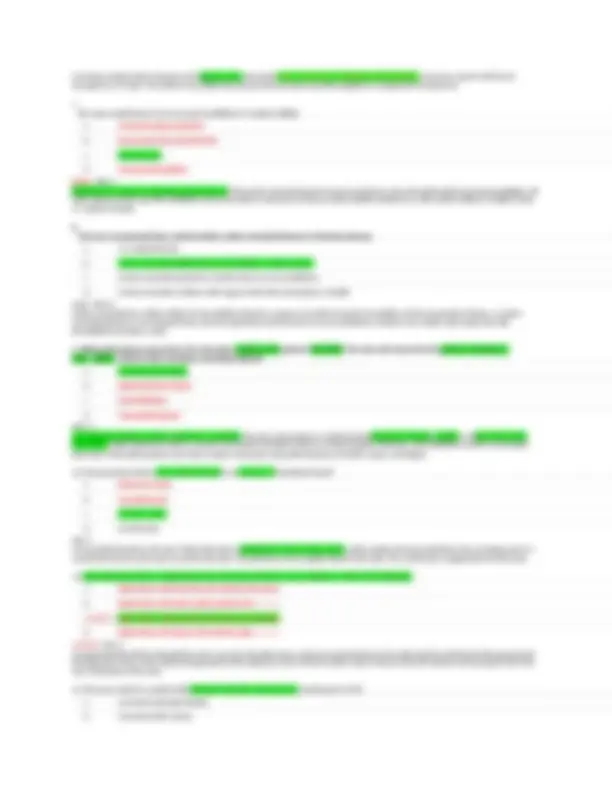
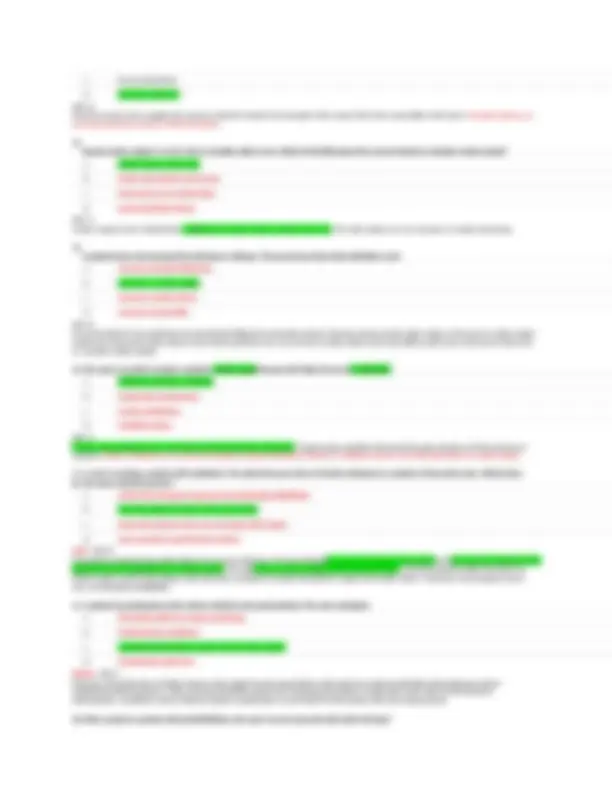

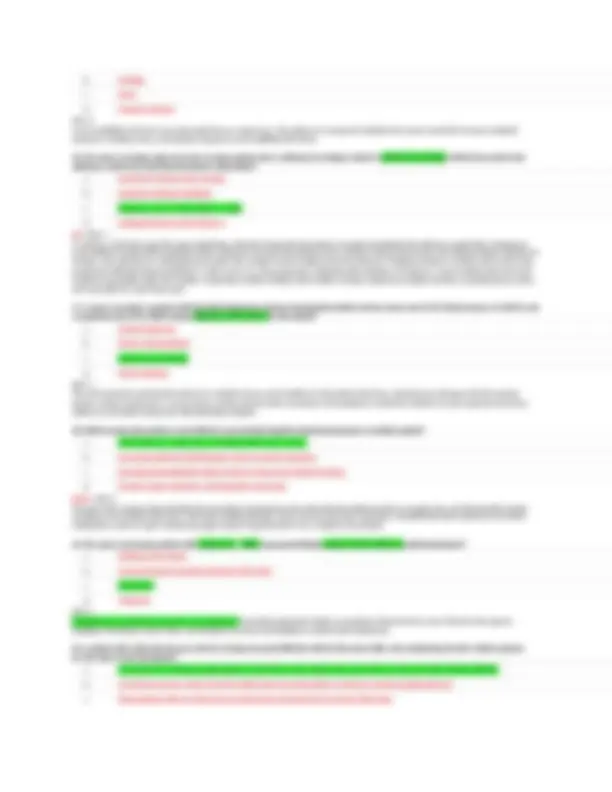
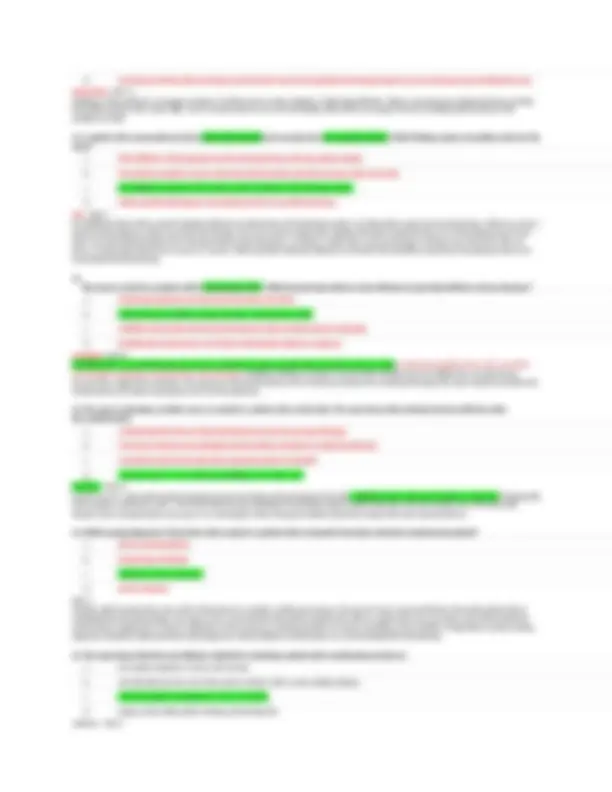



Study with the several resources on Docsity

Earn points by helping other students or get them with a premium plan


Prepare for your exams
Study with the several resources on Docsity

Earn points to download
Earn points by helping other students or get them with a premium plan
Community
Ask the community for help and clear up your study doubts
Discover the best universities in your country according to Docsity users
Free resources
Download our free guides on studying techniques, anxiety management strategies, and thesis advice from Docsity tutors
HESI Review Questions with Complete Answers
Typology: Exams
1 / 10

This page cannot be seen from the preview
Don't miss anything!







The structure that is responsible for returning oxygenated blood to the heart is the a. Pulmonary artery. b. Pulmonary vein. c. Superior vena cava. d. Inferior vena cava. ANS: B The pulmonary vein carries oxygenated blood to the heart. The pulmonary artery carries deoxygenated blood from the heart to the lungs. Both venae cavae return blood to the right atrium of the heart. 2. Chemical receptors that stimulate inspiration are located in the a. Brain. b. Lungs. c. Aorta. d. Heart. ANS: C Chemical receptors in the aorta send signals to begin the inspiration process. The brain, lungs, and heart all are affected by this chemical reaction.
3. The nurse knows that the primary function of the alveoli is to a. Carry out gas exchange. b. Store oxygen. c. Regulate tidal volume. d. Produce hemoglobin. ANS: A The alveolus is a capillary membrane that allows gas exchange of oxygen and carbon dioxide during respiration. The alveoli do not store oxygen, regulate tidal volume, or produce hemoglobin. 4. The nurse knows that anemia will result in a. Hypoxemia. b. Impaired ventilation. c. Hypovolemia. d. Decreased lung compliance. ANS: A Patients who are anemic do not have the same level of oxygen-carrying capacity. As a result, oxygen is unable to properly perfuse the tissues, resulting in hypoxemia. Impaired ventilation occurs when oxygen/carbon dioxide exchange occurs at the alveolar level. Hypovolemia is related to decreased circulating blood volume. Lung compliance is related to the elasticity of the lung tissue.
d. Decreased hemoglobin. ANS: A
c. Decreased preload. d. Decreased afterload. ANS: D The left coronary artery supplies the muscles of the left ventricle; the strength of the muscle affects the contractility of the heart. The other options are not impacted by the muscles of the left ventricle. 13. Normal cardiac output is 4 to 6 L/min in a healthy adult at rest. Which of the following is the correct formula to calculate cardiac output? a. Stroke volume x Heart rate b. Stroke volume/Body surface area c. Body surface area Cardiac index d. Heart rate/Stroke volume ANS: A Cardiac output can be calculated by multiplying the stroke volume and the heart rate. The other options are not measures of cardiac functioning. 14. A patients heart rate increased from 80 bpm to 160 bpm. The nurse knows that what will follow is a(n) a. Increase in diastolic filling time. b. Decrease in cardiac output. c. Increase in stroke volume. d. Increase in contractility. ANS: B An increased heart rate would decrease the diastolic filling time and stroke volume, thus decreasing overall cardiac output. A decrease in cardiac output results from decreased stroke volume and/or decreased heart rate. An increase in stroke volume and contractility would cause a decrease in heart rate to maintain cardiac output.
15. The nurse is careful to monitor a patients cardiac output because this helps the nurse to determine a. Peripheral extremity circulation. b. Oxygenation requirements. c. Cardiac arrhythmias. d. Ventilation status. ANS: A Cardiac output indicates how much blood is being circulated systemically. Oxygen status would be determined by pulse oximetry and the presence of cyanosis. Cardiac arrhythmias are an electrical impulse monitored through 5-lead ECG. Ventilation status is not solely dependent on cardiac output.
a. Heart rate b. Pain c. Oxygen saturation d. Blood pressure ANS: C Atrial fibrillation results in pooling of blood in the atria, forming emboli that can be pumped out to the rest of the body. The most common manifestations are stroke, myocardial infarction, and pulmonary embolus. A sudden and drastic drop in oxygenation and blood pressure can indicate both pulmonary embolus and myocardial infarction. 19. The nurse would expect a patient with right-sided heart failure to have which of the following? a. Peripheral edema b. Basilar crackles c. Chest pain d. Cyanosis ANS: A Right-sided heart failure results from inability of the right side of the heart to pump effectively, leading to a systemic backup. Peripheral edema and hepatojugular distention are signs of right-sided failure. Basilar crackles can indicate pulmonary congestion from left-sided heart failure. Cyanosis and chest pain result from inadequate tissue perfusion. 20. The P wave is represented by which portion of the conduction system? a. SA node b. AV node c. Bundle of HIS d. Purkinje network ANS: A The SA node initiates electrical conduction through the atria. The AV node conducts down through the bundle of HIS and the Purkinje network to cause ventricular contraction.
21. Which statement by the patient indicates an understanding of atelectasis? a. It is important to do breathing exercises every hour to prevent atelectasis. b. If I develop atelectasis, I will need a chest tube to drain excess fluid. c. Atelectasis affects only those with chronic conditions such as emphysema. d. Hyperventilation will open up my alveoli, preventing atelectasis. ANS: A Atelectasis develops when alveoli do not expand. Breathing exercises increase lung volume and open the airways. Deep breathing opens the pores of Kohn between the alveoli to allow sharing of oxygen between alveoli. This prevents atelectasis from developing. 22. The nurse is caring for an African American patient with COPD. The nurse knows that the best location to assess for hypoxia is the a. Nailbeds. b. Oral mucosa. c. Earlobe. d. Lower extremities. ANS: B Because of skin pigmentation, translucent areas of high blood flow such as mucous membranes are best to check for cyanosis, which is a sign of hypoxia. It is important to remember that cyanosis is a late sign of hypoxia. 23. A nurse is caring for a patient whose temperature is 100.2 F. The nurse expects this patient to hyperventilate owing to a. Increased metabolic demands. b. Anxiety over illness. c. Decreased drive to breathe. d. Infection destroying lung tissues. ANS: A Fever increases the metabolic demands of the body, increasing production of carbon dioxide. The body hyperventilates to get rid of excess carbon dioxide. Anxiety can cause hyperventilation, but this is not the direct cause from a fever. Hyperventilation decreases the drive to breathe. The cause of the fever in this question is unknown.
Nasal cannulas deliver oxygen from 1 to 6 L/min. A patient with COPD should never receive more than 3 L/min because this decreases the drive to breathe, resulting in hypoventilation. All other devices are intended for flow rates greater than 6 L/min. 30. The nurse needs to closely monitor the oxygen status of an elderly patient undergoing anesthesia because of which age-related change? a. Decreased lung defense mechanisms may cause ineffective airway clearance. b. Thickening of the heart muscle wall decreases cardiac output. c. Decreased lung capacity makes proper anesthesia induction more difficult. d. Alterations in mental status prevent patient’s awareness of ineffective breathing. ANS: A The age-related change that would affect airway clearance is decreased defense mechanisms, whereby the patient will have difficulty excreting anesthesia gas. The nurse needs to monitor the patient’s oxygen status carefully to make sure the patient does not retain too much of the drug. Heart muscle thickening and mental status do not affect oxygenation in patients undergoing anesthesia. Lung capacity is not related to anesthesia induction.
31. The nurse determines that an elderly patient is at risk for infection due to decreased immunity. Which plan of care best addresses the prevention of infection for the patient? a. Encourage the patient to stay up to date on all vaccinations. b. Inform the patient of the importance of finishing the entire dose of antibiotics. c. Schedule patient to get annual tuberculosis skin testing. d. Create an exercise routine to run 30 minutes every day. ANS: A A nursing care plan for preventative health measures should be reasonable and feasible. Keeping up to date on vaccinations is important because vaccine reduces the severity of illnesses and serious complications. Although it is important to finish the full course of antibiotics, it is not a preventative health measure. Scheduling annual tuberculosis skin tests does not address prevention. The exercise routine should be reasonable to increase compliance. 32. The nurse would expect which change in cardiac output for a patient with fluid volume overload? a. Increased preload b. Decreased afterload c. Decreased tissue perfusion d. Increased heart rate ANS: A Preload refers to the stretch of the ventricle related to the volume of blood; an increase in circulating volume would increase the preload of the heart. Afterload refers to resistance; increased pressure would lead to increased resistance, and afterload would increase. A decrease in tissue perfusion would be seen with hypovolemia. A decrease in fluid volume would cause an increase in heart rate as the body is attempting to increase cardiac output. 33. A nurse is caring for a patient with COPD who is in recovery for a myocardial infarction. Which of the following nursing actions is the priority? a. Place the patient on continuous cardiac monitoring. b. Put the patient on 6 L/min of oxygen via nasal cannula. c. Deep suction the patient every 2 hours. d. Assess bilateral lung sounds every hour. ANS: A A patient who has a recent myocardial infarction can convert back to a deadly rhythm and needs to be placed on continuous cardiac monitoring. The patient has COPD and should not be placed on oxygen over 4 L/min. Proper cardiac functioning will allow oxygenated blood to be distributed to tissues. Patients with recent myocardial infarction should not be suctioned. This patient does not have any indicators to warrant hourly assessment of lung fields. 34. The nurse expects a patient with angina pectoris to a. Experience feelings of indigestion after eating a heavy meal. b. Have decreased oxygen saturation during rest. c. Hypoventilate during periods of acute stress. d. Complain of tingling in the left arm that lasts throughout the morning. ANS: A Angina pectoris is chest pain that results from limited oxygen supply. Often pain is precipitated by activities such as exercise, stress, and eating a heavy meal and lasts from 1 to 15 minutes. Hyperventilation may occur to compensate for decreased oxygen perfusion. Symptoms of angina pectoris are relieved by rest and/or nitroglycerin. Oxygen saturation, pain, and tingling in the arm should be relieved by rest. Pain or arm tingling that persists could be a sign of myocardial infarction. 35. A non-modifiable risk factor for lung disease is a. Allergies.
b. Smoking. c. Stress. d. Asbestos exposure. ANS: A A non-modifiable risk factor is one the patient has no control over. The patient can manage her allergies but cannot control her immune-mediated responses. Smoking, stress, and asbestos exposure are all modifiable risk factors.
36. The nurse is creating a plan of care for an obese patient who is suffering from fatigue related to ineffective breathing. Which intervention best addresses a short-term goal that the patient could achieve? a. Running 30 minutes every morning b. Stopping smoking immediately c. Sleeping on two to three pillows at night d. Limiting the diet to 1500 calories a day ANS: C To achieve a short-term goal, the nurse should plan a lifestyle change that the patient can make immediately that will have a quick effect. Sleeping on several pillows at night will immediately relieve orthopnea and open the patients airway, thereby reducing sleep apnea and reducing fatigue. Running 30 minutes a day will improve cardiopulmonary health, but a patient needs to build up exercise tolerance. Smoking cessation is another process that many people have difficulty doing immediately. It often occurs as a slow progression, beginning with reduction of frequency. A more realistic short-term goal would be to gradually reduce the number of cigarettes smoked. Limiting caloric intake can help a patient lose weight, but this is a gradual process and is not reasonable for a short-term goal. 37. A nurse is caring for a patient with left sided hemiparesis who has developed bronchitis and has a heart rate of 105, blood pressure of 156/90, and a respiration rate of 30. Which nursing diagnosis is the priority for this patient? a. Activity intolerance b. Risk for skin breakdown c. Impaired gas exchange d. Risk for infection ANS: C The most important nursing intervention is to maintain airway and circulation for this patient; therefore, Impaired gas exchange is the first nursing priority. Activity intolerance is a concern but is not the priority in this case. Risk for skin breakdown and Risk for infection are also important but do not address an immediate impairment with physiologic integrity. 38. Which nursing intervention is most effective in preventing hospital-acquired pneumonia in an elderly patient? a. Assist patient to cough, turn, and deep breathe every 2 hours. b. Encourage patient to drink through a straw to prevent aspiration. c. Discontinue humidification delivery device to keep excess fluid from lungs. d. Monitor oxygen saturation, and frequently assess lung bases. ANS: A The goal of the nursing action should be the prevention of pneumonia; the action that best addresses this is to cough, turn, and deep breathe to keep secretions from pooling at the base of the lungs. Drinking through a straw increases the risk of aspiration. Humidification thins respiratory secretions, making them easier to expel. Monitoring oxygen status is important but is not a method of prevention. 39. The nurse is assessing a patient with emphysema. Which assessment finding requires further follow-up with the physician? a. Clubbing of the fingers b. Increased anterior-posterior diameter of the chest c. Hemoptysis d. Tachypnea ANS: C Hemoptysis is an abnormal occurrence of emphysema, and further diagnostic studies are needed to determine the cause of blood in the sputum. Clubbing of the fingers, barrel chest, and tachypnea are all normal findings in a patient with emphysema. 40. A patient with COPD asks the nurse why he is having increased difficulty with his fine motor skills, such as buttoning his shirt. Which response by the nurse is most therapeutic? a. Your body isn’t receiving enough oxygen to send down to your fingers; this causes them to club and makes dexterity difficult. b. Your disease process makes even the smallest tasks seem exhausting. Try taking a nap before getting dressed. c. Often patients with your disease lose mental status and forget how to perform daily tasks.
Suctioning passes should be limited to 10 to 15 seconds to avoid oxygen desaturation. Suction for a tracheostomy should be set at 100 to 150 mm Hg. Excessive lubrication can clog the catheter or occlude the airway. Suction should not be applied until after the catheter has been inserted. 46. The nurse is assessing a patient with a right pneumothorax. Which finding would the nurse expect? a. Bilateral expiratory crackles b. Absence of breath sounds on the right side c. Right-sided wheezes on inspiration d. Trachea deviated to the right ANS: B A right pneumothorax is a collapsed lung; therefore, no breath sounds should be heard on that side. Crackles indicate pneumonia. Wheezes are asthma related. A collapsed right lung would cause the trachea to deviate to the left. 47. The nurse knows that a closed suction device would be most appropriate for which patient? a. A 5-year-old with an asthma attack following severe allergies b. A 24-year-old with a right pneumothorax following a motor vehicle accident c. A 50-year-old with pulmonary edema following a myocardial infarction d. A 75-year-old with aspiration pneumonia following a stroke ANS: D Suctioning is most appropriate for someone with increased lung secretions who may have difficulty getting them up on their own. In this case, the stroke patient would have decreased coughing abilities and already has a diagnosis of pneumonia. The 5-year-old child would benefit from an inhaler. A chest tube is needed for the pneumothorax. Suctioning is contraindicated in patients with a myocardial infarction.
48. While the nurse is changing the ties on a tracheostomy collar, the patient coughs, dislodging the tracheostomy tube. What is the nurses first nursing action? a. Press the emergency response button. b. Place the patient on a face mask delivering 100% oxygen. c. Insert a spare tracheostomy without the obturator. d. Manually occlude the tracheostomy with sterile gauze. ANS: C The nurses first priority is to establish a stable airway by inserting a spare trach into the patients airway; ideally an obturator should be used, but it is not life threatening to omit this. The nurse could activate the emergency response team if the patient is still unstable after the tracheostomy is placed. A patient with a tracheostomy has an impairment that causes him not to be able to breathe normally; a face mask would not be an effective method of getting air into the lungs. Manually occluding pressure over the tracheostomy site is not appropriate.